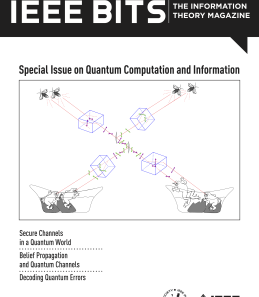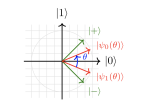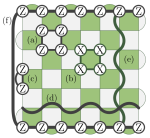
Fall 2022 — Issue 3, Volume 2
This is a special issue of IEEE BITS featuring articles that examine how information theorists are helping the “second quantum revolution” and what potential opportunities in quantum computation lie ahead.
Column article(s)
Scroll to see all columns in this issue.
The security of popular public key-cryptographic protocols, such as RSA, Diffie–Hellman key exchange and the digital signature algorithm (DSA), is endangered by the advent of quantum computers. Shor brought a big breakthrough with his quantum algorithm that can be used to factor an arbitrarily large integer into the product of its prime factors, hence jeopar...
For secure practical systems, quantum key distribution (QKD) must provide high key rates over long distances. Time-entanglement-based QKD promises to increase the secret key rate and distribution distances compared to other QKD implementations. This article describes the major steps in QKD protocols, focusing on the nascent QKD technology based on high-dimen...
It is well-known that nondegenerate quantum error correcting codes (QECCs) are constrained by a quantum version of the Hamming bound. Whether degenerate codes also obey such a bound, however, remains a long-standing question with practical implications for the efficacy of QECCs. We employ a combination of previously derived bounds on QECCs to demonstrate tha...
This article reviews belief propagation (BP) for classical inference problems and describes its extension to quantum systems, which is known as BP with quantum messages (BPQM). Since BP plays a key role in many low-complexity decoders for error-correcting codes, BPQM enables the practical extension of these decoders to classical quantum channels, such as the...
Decoding algorithms are essential to fault-tolerant quantum-computing architectures. In this perspective we explore decoding algorithms for the surface code; a prototypical quantum low-density parity-check code that underlies many of the leading efforts to demonstrate scalable quantum computing. Central to our discussion is the minimum-weight perfect-matchin...















